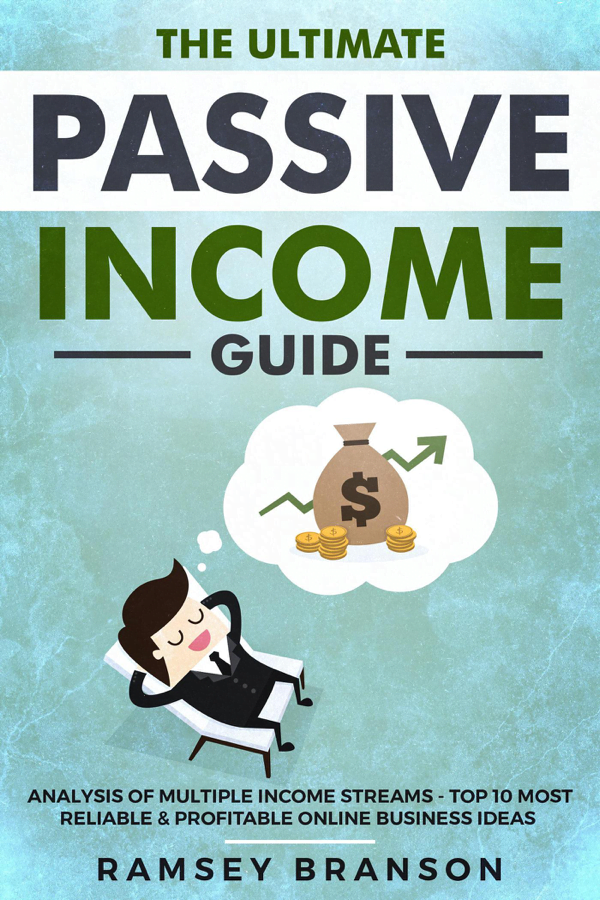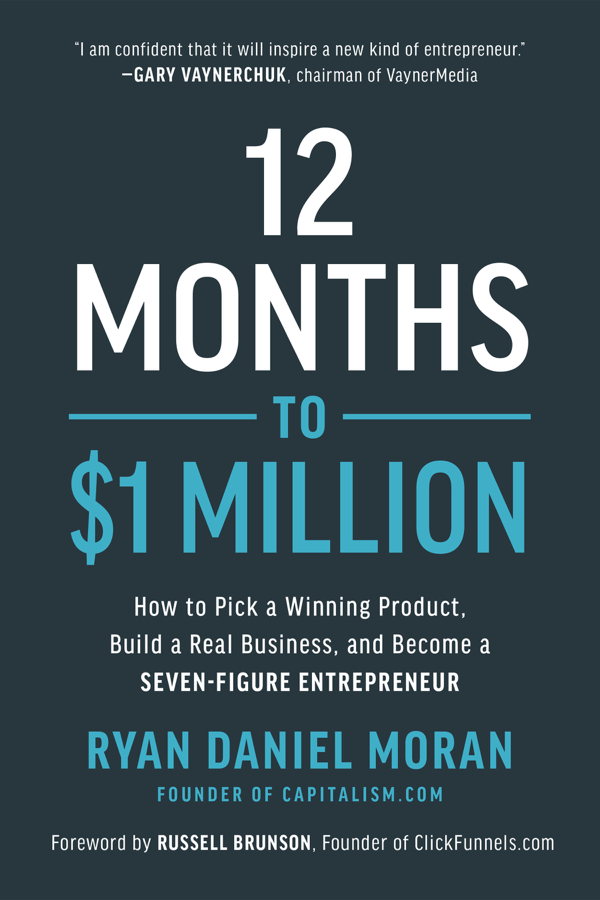
Introduction to Passive Income
In today’s fast-paced world, the pursuit of financial stability and freedom has led many individuals to explore diverse income streams. Among these, passive income has emerged as a particularly attractive goal. But what exactly is passive income, and why has it garnered so much attention?
Passive income refers to earnings derived from ventures in which an individual is not actively involved daily. Unlike active income, which requires continuous effort and time, passive income is typically generated through investments or business opportunities that, once established, require minimal ongoing work. This distinction is crucial as it highlights the potential for generating revenue without being tied to a conventional job or business.
The benefits of passive income are manifold. Foremost, it provides financial security by diversifying income sources, thereby reducing dependency on a single paycheck. This diversification can act as a buffer against economic uncertainties, offering greater financial resilience. Additionally, passive income can significantly contribute to financial freedom, enabling individuals to pursue personal interests and spend more time with family and friends. It can also facilitate early retirement, allowing individuals to enjoy their later years without financial strain.
However, achieving sustainable passive income requires a careful selection of business options. The right choices can lead to reliable and long-term income streams, while poor decisions may result in unstable or insufficient earnings. It is essential to consider factors such as market demand, initial investment requirements, potential risks, and the scalability of the chosen business model. By thoroughly researching and evaluating these aspects, individuals can make informed decisions that align with their financial goals and risk tolerance.
In the subsequent sections, we will delve into specific trending business options that hold promise for future passive income. From real estate investments to digital ventures, these opportunities offer various pathways to achieving financial independence and security.“`
Real Estate Investment
Real estate investment remains one of the most reliable avenues for generating passive income. Diversified forms of real estate investments provide multiple opportunities for investors to earn returns. These include rental properties, Real Estate Investment Trusts (REITs), and real estate crowdfunding platforms.
Rental properties are perhaps the most traditional form of real estate investment. By purchasing residential or commercial properties and renting them out, investors can generate a steady stream of monthly income. The key to a successful rental property investment lies in effective property management and selecting prime locations with high demand and growth potential. Additionally, investors should consider factors such as property taxes, maintenance costs, and vacancy rates when evaluating potential returns.
Real Estate Investment Trusts (REITs) offer an alternative for those who prefer not to manage properties directly. REITs are companies that own, operate, or finance income-producing real estate across various sectors, such as residential, commercial, industrial, and retail properties. By investing in REITs, individuals can benefit from regular dividend payments generated from rental income and capital appreciation of the properties within the trust. REITs are also publicly traded, providing liquidity and the ability to diversify one’s investment portfolio.
Real estate crowdfunding platforms have gained popularity in recent years, allowing investors to pool their funds to invest in larger real estate projects. These platforms provide access to high-quality investment opportunities that were previously reserved for institutional investors. Crowdfunding offers the advantage of lower entry costs and the ability to diversify across multiple projects and property types. However, it is essential to conduct thorough due diligence on the platform and specific projects to mitigate risks.
While real estate investment presents significant potential returns, it is not without risks. Market fluctuations, property depreciation, and tenant issues can affect income and property value. Therefore, it is crucial to develop a comprehensive investment strategy, including careful property selection, diversification, and professional management, to maximize returns and minimize risks.
Dividend Stocks
Dividend stocks are shares in companies that return a portion of their earnings to shareholders, typically quarterly, in the form of dividends. These stocks are a popular choice for investors seeking passive income because they provide a regular stream of income without the need to actively manage the investment. The dividend yield, which is the annual dividend payment divided by the stock price, can offer a reliable income source, particularly in stable and well-established companies.
Investing in dividend stocks involves purchasing shares of companies that have a history of paying dividends. These companies are often financially stable, with consistent earnings and a track record of profitability. When selecting high-quality dividend-paying companies, it is crucial to look for those with a strong balance sheet, a sustainable payout ratio, and a history of dividend growth. Companies that regularly increase their dividends can help investors stay ahead of inflation and boost their income over time.
Diversification is an essential strategy when investing in dividend stocks. By spreading investments across various sectors and industries, investors can reduce the risk associated with any single company or sector. This approach helps to mitigate the impact of market volatility and economic downturns on the overall portfolio. Additionally, international dividend stocks can provide exposure to global markets and further enhance diversification.
Despite the benefits, there are potential risks associated with dividend stocks. Companies may reduce or eliminate dividend payments due to financial difficulties or economic challenges. Consequently, it is important to conduct thorough research and stay informed about the financial health of the companies in which you invest. Moreover, stock prices can fluctuate, affecting the value of the investment.
Dividend reinvestment plans (DRIPs) offer a way to maximize returns by automatically reinvesting dividends to purchase additional shares. This compounding effect can significantly increase the value of the investment over time, as the reinvested dividends generate their dividends. DRIPs also help investors take advantage of dollar-cost averaging, reducing the impact of market volatility.
Peer-to-Peer Lending
Peer-to-peer (P2P) lending has emerged as an innovative approach to generating passive income. This method allows investors to lend money directly to individuals or small businesses through online platforms, bypassing traditional financial institutions. The P2P lending process is straightforward: investors sign up on a P2P platform, choose borrowers based on credit profiles and other criteria, and distribute their funds accordingly. In return, borrowers repay the loan with interest, providing investors with potential returns that often surpass those offered by conventional savings accounts or fixed deposits.
One of the primary attractions of P2P lending is the potential for higher yields. Depending on the platform and the risk profile of the borrower, investors can earn annual returns ranging from 5% to 12% or more. These returns can be particularly appealing in a low-interest-rate environment, making P2P lending a viable option for those seeking to diversify their income streams.
However, P2P lending is not without its risks. The most notable risk is borrower default, where the borrower fails to repay the loan. This risk can be mitigated through several strategies. Firstly, diversification is key: spreading investments across multiple loans and borrowers can reduce the impact of any single default. Secondly, carefully selecting platforms with robust credit assessment processes can help in identifying creditworthy borrowers. Lastly, some platforms offer provision funds or insurance to cover potential losses, providing an additional layer of security for investors.
In conclusion, peer-to-peer lending presents a promising opportunity for generating passive income. By understanding the process, recognizing the potential returns, and implementing risk mitigation strategies, investors can effectively incorporate P2P lending into their broader investment portfolio. As with any investment, it is crucial to conduct thorough research and consider one’s risk tolerance before diving into P2P lending.
In an increasingly digital world, the demand for online education has surged, presenting a lucrative opportunity for generating passive income through creating and selling online courses. This trend is driven by the convenience and flexibility online learning offers, making it an attractive option for a diverse audience ranging from professionals seeking to upskill to hobbyists exploring new interests.
Identifying profitable niches is the first step toward successful course creation. Conduct comprehensive market research to understand the needs and preferences of potential learners. Focus on areas where you have expertise and where there is a demonstrated demand. Popular niches often include technology, business, personal development, and creative arts. By narrowing down a specific target audience, you can tailor your content to address their unique challenges and goals.
Designing engaging course content is crucial for student retention and satisfaction. Utilize a variety of instructional methods such as video lectures, interactive quizzes, and practical assignments to cater to different learning styles. High-quality production values, clear and concise explanations, and a well-structured curriculum can significantly enhance the learning experience. Additionally, leveraging multimedia elements can make the course more dynamic and enjoyable.
Choosing the right platform for course distribution is essential. Platforms like Udemy, Teachable, and Coursera offer robust tools for course creation, marketing, and analytics. These platforms also provide access to a vast audience base, increasing your course’s visibility. Alternatively, you can host your course on your website to have more control over pricing and branding.
Effective marketing strategies are vital to attract and retain students. Utilize social media, email marketing, and content marketing to reach a broader audience. Collaborate with influencers and industry experts to enhance credibility and reach. Offering free trials or teaser content can also entice potential students to enroll in the full course.
Continuous updates and improvements are necessary to maintain the relevance and quality of your course. Regularly gather feedback from students and stay updated with industry trends to ensure your content remains current and valuable. By consistently refining your course, you can sustain student interest and generate a steady stream of passive income.
Affiliate Marketing
Affiliate marketing has emerged as a prominent method for generating passive income. It involves promoting products or services offered by other companies and earning a commission for each sale or lead generated through your referral. The process is straightforward: affiliate marketers sign up for affiliate programs, obtain unique affiliate links, and share these links through their content. When someone clicks on the link and makes a purchase, the affiliate earns a commission.
To succeed in affiliate marketing, selecting profitable niches is crucial. A profitable niche has high demand and low competition. Conduct thorough market research to identify niches where you can provide significant value and where there is a steady flow of potential customers. Once you’ve identified a niche, focus on building a strong online presence through a blog, social media platforms, or a YouTube channel. Consistently creating high-quality content that resonates with your target audience is key to establishing credibility and trust.
Choosing the right affiliate programs is another critical factor. Look for programs that offer competitive commission rates, reliable tracking systems, and timely payouts. Popular affiliate platforms like Amazon Associates, ClickBank, and ShareASale provide a wide range of products to promote. Additionally, some companies offer direct affiliate programs that might be more lucrative. Always read the terms and conditions to ensure you understand the payment structure and any restrictions.
Creating high-quality content is essential in driving conversions. Your content should not only be informative but also engaging and persuasive. Use various content formats such as blog posts, reviews, tutorials, and videos to reach a broader audience. Providing honest and detailed product reviews can help build trust with your audience, increasing the likelihood of conversions. Furthermore, integrating your affiliate links naturally within the content, rather than appearing overly promotional, can enhance user experience and drive higher engagement.
Building trust with your audience is paramount. Transparency about your affiliate relationships is important; disclose that you earn commissions on purchases made through your links. This honesty can foster a sense of trust and encourage your audience to support you. Engage with your audience by responding to comments and questions, and continuously seek feedback to improve your content and approach.
Investing in Index Funds
Investing in index funds has emerged as a highly effective strategy for generating passive income. Index funds are a type of mutual fund or exchange-traded fund (ETF) designed to replicate the performance of a specific market index, such as the S&P 500 or the Nasdaq-100. By investing in a diversified portfolio of stocks that mirror the composition of the chosen index, investors gain exposure to a broad segment of the market with minimal effort.
One of the primary advantages of index funds is their low-cost structure. Unlike actively managed funds, which require professional fund managers to make investment decisions, index funds follow a passive management approach. This significantly reduces management fees and other associated costs, allowing a larger portion of the returns to be passed on to investors. Additionally, the diversification inherent in index funds mitigates individual stock risks, making them a lower-risk option compared to investing in individual stocks.
When selecting the right index funds, it is crucial to consider factors such as the fund’s expense ratio, tracking error, and the underlying index it aims to replicate. A lower expense ratio indicates lower operational costs, which can enhance net returns over time. Tracking error measures how closely the fund follows the performance of its benchmark index. A smaller tracking error signifies a more accurate replication, which is desirable for investors.
Understanding potential returns is another vital aspect of investing in index funds. Historically, major index funds have delivered consistent returns that closely match the overall market performance. However, it is important to maintain a long-term investment horizon, as market fluctuations can impact short-term returns. Over extended periods, the compounding effect of reinvested dividends and capital gains can substantially grow the initial investment.
Despite their benefits, index funds are not without risks. Market volatility can lead to short-term fluctuations in the value of the fund. To manage these risks effectively, investors should diversify their portfolios further by including different asset classes and regularly review their investment strategy to ensure it aligns with their financial goals and risk tolerance.
Building a Blog or YouTube Channel
In the digital age, building a blog or YouTube channel has emerged as a viable option for generating passive income. With the right approach, these platforms can become lucrative ventures that provide substantial returns over time. The journey begins with creating valuable content that resonates with a specific audience. Selecting a niche is crucial; it allows you to target a particular segment of the market, making your content more relevant and engaging.
Once your niche is chosen, the next step is to optimize your content for search engines. Effective SEO strategies will ensure that your blog or YouTube videos reach a broader audience. Utilize keywords naturally within your content, titles, and descriptions, and ensure your website or channel is technically sound. This will increase your chances of appearing in search results, driving organic traffic to your platform.
Monetizing a blog or YouTube channel involves several avenues. Advertisements are a common method, where platforms like Google AdSense can display ads on your site or videos, earning you revenue through clicks and impressions. Sponsorships are another lucrative option. As your audience grows, brands may approach you to promote their products or services, offering compensation in return. Additionally, selling your products or services can be highly profitable. This may include digital products, merchandise, or online courses.
Leveraging social media is essential to driving traffic to your blog or YouTube channel. Platforms like Facebook, Instagram, and Twitter can significantly boost your visibility and help you reach new audiences. Sharing your content regularly and engaging with your followers on these platforms will foster a sense of community and loyalty.
Consistency and engagement are key elements in building a successful blog or YouTube channel. Posting content regularly keeps your audience interested and coming back for more. Interacting with your audience through comments, live sessions, and social media can build a loyal following and enhance your platform’s credibility.
In conclusion, building a blog or YouTube channel requires dedication, strategic planning, and consistent effort. By focusing on valuable content, effective SEO, multiple monetization strategies, and active engagement, you can create a sustainable source of passive income that grows over time.












